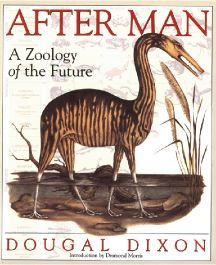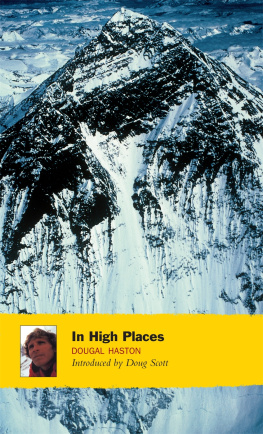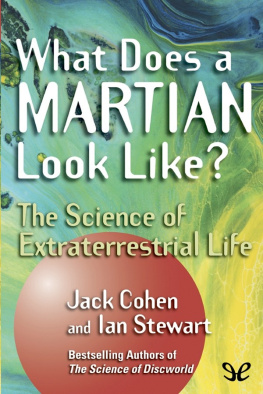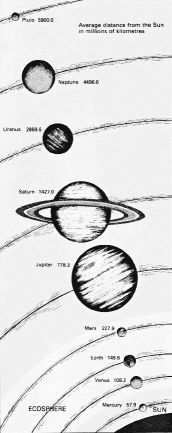Dougal Dixon - After Man: A Zoology of the Future
Here you can read online Dougal Dixon - After Man: A Zoology of the Future full text of the book (entire story) in english for free. Download pdf and epub, get meaning, cover and reviews about this ebook. year: 1981, genre: Religion. Description of the work, (preface) as well as reviews are available. Best literature library LitArk.com created for fans of good reading and offers a wide selection of genres:
Romance novel
Science fiction
Adventure
Detective
Science
History
Home and family
Prose
Art
Politics
Computer
Non-fiction
Religion
Business
Children
Humor
Choose a favorite category and find really read worthwhile books. Enjoy immersion in the world of imagination, feel the emotions of the characters or learn something new for yourself, make an fascinating discovery.
- Book:After Man: A Zoology of the Future
- Author:
- Genre:
- Year:1981
- Rating:4 / 5
- Favourites:Add to favourites
- Your mark:
- 80
- 1
- 2
- 3
- 4
- 5
After Man: A Zoology of the Future: summary, description and annotation
We offer to read an annotation, description, summary or preface (depends on what the author of the book "After Man: A Zoology of the Future" wrote himself). If you haven't found the necessary information about the book — write in the comments, we will try to find it.
After Man: A Zoology of the Future — read online for free the complete book (whole text) full work
Below is the text of the book, divided by pages. System saving the place of the last page read, allows you to conveniently read the book "After Man: A Zoology of the Future" online for free, without having to search again every time where you left off. Put a bookmark, and you can go to the page where you finished reading at any time.
Font size:
Interval:
Bookmark:
OF LIFE
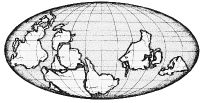
The earth has existed for about 5000 million years and has been populated by organisms of one sort or another for between 3500 - 4000 million years of that time. However, an accurate fossil record of the earth's life can only be traced back some 620 million years to the time when hard skeletons first came into existence. At that time life was present only in the sea and the land was barren. The distribution of land and sea was not as it is today. The configuration of the continents and oceans is constantly changing due to a mechanism called plate tectonics. The earth's crust is made up of a number of plates, like the panels of a football. These plates are formed continually along one edge, where material wells up from the earth's interior,
and are destroyed at another, where one plate slides beneath a neighbouring one and is lost. The upwelling takes place along mid-oceanic ridges and the destruction occurs along deep-sea troughs. The material involved consists of oceanic crust, rich in silica and magnesia. The continents are made of a different sort of crust, rich in silica and aluminium, which, being lighter, remains on top so that the continents are carried here and there over the globe by plate-tectonic activity. This process has continued throughout geological time and will continue until the end of the world. The importance of plate tectonics to the history of life on earth is not just one of geography. Plate tectonics in part affects the pattern of global climate, which in geological terms fluctuates over a comparatively short space of time, and has undoubtedly contributed to the relatively sudden changes that have occurred in the predominant life form on earth. The juxtaposition of continents at crucial stages in the development of these animals has at certain times been important in their spread throughout the world and has produced marked differences between forms found on different land masses.
THE ORIGINS OF LIFE
The sun and the solar system were formed from a vast shapeless cloud of interstellar gas, spinning slowly in space at a rate of about once in ten million years. As it rotated it began to contract under the influence of its own gravity and, in consequence, to rotate more rapidly. The forces involved flattened the gas cloud into a disc in which material became concentrated at the centre to form the sun. Across the disc, eddies appeared that began to accrete material, forming the foundations of what later became the planets. Dust particles consisting mainly of droplets of iron and particles of silica compounds began to solidify. The droplets coalesced into lumps and collected together in the eddies under the influence of gravity. The iron, being heavier, sank to the middle and the silica remained on the outside to give the protoplanets an iron core surrounded by a stony mantle. The inner planets - Mercury, Venus, Earth and Mars - were formed in this way. The other planets aggregated from lighter material such as carbon dioxide and ammonia, which condensed from the gas as the temperature continued to fall. At this time the compaction of materials in the early sun triggered off the process of nuclear fusion and the sun began to radiate energy - a process that has continued for the last 5000 million years and will continue for 5000 million years to come.
In the days before proper scientific investigation, man believed that the earth as he knew it and all the living creatures with which he was familiar were the result of a single supernatural act of creation that had been carried out at a particular date in the relatively recent past. Fossil sea creatures found far in land, which were later to provide evidence for major changes in the distribution of land and sea, were dismissed as being the result of a punitive flood. |
It is possible that the earth's first atmosphere was rich in hydrogen, methane and ammonia, similar in composition to the atmospheres of the outer planets. As time went on water vapour and carbon dioxide would have been added to these gases by outgassing from the newly formed rocks. The water at first would have remained as a vapour since the heat of the atmosphere at this time would not have allowed it to condense. On the other hand, it is equally possible that the primeval atmosphere of hydrogen, methane and ammonia was mostly driven away by the heat of the sun soon after formation and that the earth's first stable atmosphere was composed chiefly of carbon dioxide and water vapour vented from the interior through fumaroles and volcanoes. In either case the water that condensed and fell as rain when the earth became cool undoubtedly contained molecules of ammonia, methane and hydrogen dissolved in it. If this solution was subjected to high-energy influxes such as lightning bolts or ultraviolet radiation from the sun, chemical reactions would have occurred that would have synthesized complex organic molecules such as amino acids - the materials from which living things are built.
On the other hand there may be a totally different explanation for the origin of complex organic molecules. Simple organic compounds such as formaldehyde are present in interstellar dust -particles of carbon produced in stellar explosions. Molecules of these organic substances may have accumulated on the particles and have subsequently united into the long chemical chains of complex organic molecules that represent the first step in the chemistry of life. Gas emitted from stars may contain oxygen, carbon and nitrogen. If the gas contains more oxygen than carbon or nitrogen, organic molecules such as polysaccharides (simple sugars) may form. If nitrogen is the most abundant element the production of nucleic acids and chlorophyll - the energizing substance of growing plants - is more likely. Interstellar dust can, under the influence of gravitational forces, clump together, and in certain circumstances fall into orbit around a sun as a comet. If such a comet struck the earth in the early days of the planet's formation, as is more than likely, interstellar organic molecules would have reached the surface of our planet.
Whatever the case, it is certain that the hot seas on the steaming surface of the earth 4500 million years ago contained the complex organic molecules that are necessary for the building and development of living things.
Given suitable atmospheric and surface conditions it is possible for life to exist on a planet that falls within a belt around the Sun known as the ecosphere. The belt extends from just inside the orbit of Venus to just outside the orbit of Mars. Mercury, with a maximum surface temperature of 370C, is much too hot to support life, and the outer planets, becoming progressively colder through to Neptune and Pluto, where the maximum temperature is well below -200C, are much too cold.
|
The first thing on earth that could properly be termed 'alive' was a molecule with the unique property of reproducing itself. To do this it must have been able to break down complex molecules such as polysaccharides and use their constituent parts to build a mirror image of itself. Any characteristic of the basic molecule that helped it in this task would have enhanced its chances of survival and that characteristic would have been perpetuated in the replication process. Any feature that hindered it would have led to that molecule's extinction. Evolution had begun.
Font size:
Interval:
Bookmark:
Similar books «After Man: A Zoology of the Future»
Look at similar books to After Man: A Zoology of the Future. We have selected literature similar in name and meaning in the hope of providing readers with more options to find new, interesting, not yet read works.
Discussion, reviews of the book After Man: A Zoology of the Future and just readers' own opinions. Leave your comments, write what you think about the work, its meaning or the main characters. Specify what exactly you liked and what you didn't like, and why you think so.

